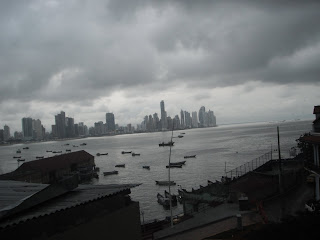As Amanda and I begin the final preparations for our voyage, I realized that perhaps it would behoove everyone else to know what we have researched and planned during the last couple months. Not only was the timing serendipitous in talking with Amanda back in June about traveling, but it was wonderful to find someone who also wants to travel with a purpose. While one of our driving motivators for this trip is to satisfy our itch to explore outside the U.S., another is to gather an understanding of the environmental and economical concerns that face developing countries, and to attempt to further solidify what we would like to pursue in graduate school. It is as though I have a few stepping stones pacing out the route I would like to study, and hopefully this trip will bridge those gaps into a (more) concrete path.
As we soak up Latin American culture to the fullest, we also plan to reside and work at these nonprofit organizations.
Asociación de Productores de Orquideas de El Valle y Cabuya, El Valle de Antón, Panama
Spanning across the world, there are thought to be over 20,000 species of Orchidaceae, or orchids. This family of flowers is the second largest family of flowering plants, just following the sunflower and daisy family. In 1862, Charles Darwin wrote the Fertilisation of Orchids, bringing the ideas of specialization and insect pollination to light. Although this biologically important flower can be found on nearly every terrain (yes, even in Southern Patagonia), most are found in tropical Central America. The Republic of Panama is home to over 1,500 species of Orchid, placing it among the top orchid-rich countries in the world.
Now, take a deep sigh. The destruction of the rainforest has affected the global orchid population. And, surprise surprise, many rare orchid species are on the fast-train to extinction. Additionally, in El Valle, Panama, high poverty rates have driven some to illegally remove endangered orchids from the forest to sell for steep profits.
APROVACA (Asociación de Productores de Orquideas de El Valle y Cabuya) began in 2001 to conserve Panamanian orchid species. The nonprofit organization has two missions: to breed the endangered orchids in an effort to pull them back into abundance; and to grow and sell non-native species to promote sustainable ecotourism.
Amanda and I will volunteer with APROVACA to better understand the economical, environmental, and social implications of ecotourism, as well as learning conservation techniques hands-on.
AguaClara, Honduras
Funny how once you've left somewhere, you realize how amazing the opportunities are. Over a year after graduating, did I (embarrassing to admit - a Natural Resources minor) hear about
AguaClara from Amanda. Cornell University professor, Monroe Weber-Shirk, began the organization in 2005. AguaClara, led by Weber-Shirk and fueled by Cornell students, designs drinking water treatment equipment that is sustainable—both in cost and knowledge for people in resource-deficient, financially-struggling communities.
AguaClara has launched several water treatment plants across Honduras. Here, I hope to get an inside view of this organization to better understand the logistical and political elements of running an environmental sustainability organization. I also would like to use this opportunity to gather information about various water sanitation procedures and to truly understand first-hand the health necessity of pure water. Amanda, writing for the United Nations, will be working on and article highlighting AguaClara, which will allow us the opportunity to see and learn details not advertised to the public.
Mercado Global, Panajachel, Guatemala
Mercado Global began in 2004 and is a fair trade, nonprofit organization that supports indigenous women in the rural town of Panajachel, near Lake Atitlan. We hope to work with this organization for a couple weeks writing stories and blog entries about poverty and education, the effects of fair trade, and indigenous women's rights for the organization's website .
I hope to also use this opportunity to interview women in Panajachel, and the directors of this successful nonprofit, about microfinance. I am interested in learning more about the feasibility of microloans for women in developing nations, the pros and cons to the economic concept, and how I might go about becoming more involved with this type of business further down the line.
WOOFing, Ecuador
In Ecuador, and possibly in Peru and Chile, we are hoping to work on an organic farm.
WOOFing, short for World Wide Opportunities on Organic Farms, is quickly becoming a backpacking hot trend. People from all over the world are opening farms that promote sustainable farming techniques. The farms often offer homestays for travelers—food and living in exchange for daily work. This will not only be a great way to meet locals but also to learn about sustainable farming practices (to either employ or pass along to others), and to understand the economics of the farming world.
The rest is to be determined, based on time, health, funding, and where our spirits take us. And ideally, somewhere along the way I will hopefully be steered in a direction to pursue when I return to the States. (Or not, and I will return still confused about the future, but at least with my eyes open a little wider.)








 The land where Panama City now lies, at one time fell along the trail of El Camino Real in route to the Caribbean.
The land where Panama City now lies, at one time fell along the trail of El Camino Real in route to the Caribbean. 

